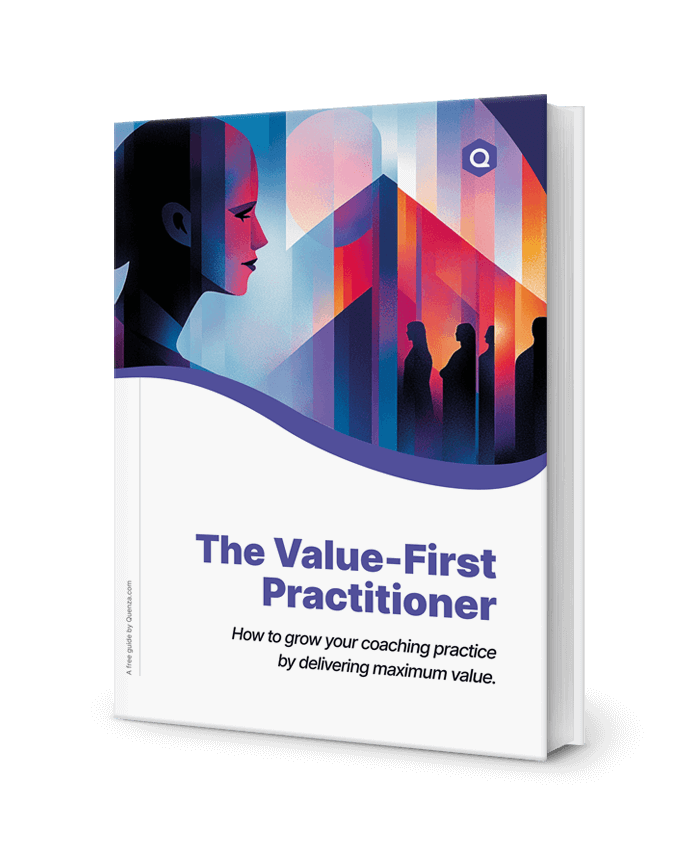Play therapy, often associated with children, is increasingly recognized as a powerful therapeutic approach for adults. This innovative method taps into the innate human capacity for play, offering a unique pathway to healing and personal growth. While it may seem unconventional at first, play therapy for adults provides a safe and creative space to explore emotions, overcome challenges, and foster self-discovery.
In our fast-paced, often stressful world, the idea of ‘play’ as a form of therapy might seem counterintuitive. However, play therapy offers adults a chance to step away from the constraints of verbal communication and logical thinking, allowing for a more holistic and experiential form of expression and healing. This blog post will delve into the world of play therapy for adults, exploring its benefits, techniques, and the profound impact it can have on mental health and personal development.
Whether you’re struggling with anxiety, depression, past trauma, or simply seeking a fresh approach to self-improvement, play therapy could be the key to unlocking new insights and facilitating positive change in your life. Join us as we explore this fascinating and effective therapeutic approach that’s helping adults rediscover the healing power of play.
Understanding Play Therapy
Play therapy is a structured, theoretically based approach to therapy that builds on the normal communicative and learning processes of children and adults alike [1]. For adults, it provides a unique opportunity to revisit and heal from past experiences, express complex emotions, and develop new coping strategies in a safe and supportive environment [2].
At its core, play therapy for adults involves the use of various play activities to help individuals express themselves, work through psychological issues, and achieve optimal mental health. These activities can include art, music, movement, storytelling, sand play, and various other creative expressions.
The benefits of play therapy for adults are numerous:
- Emotional Expression: Play therapy offers a non-verbal outlet for expressing difficult emotions or experiences that may be challenging to articulate through traditional talk therapy.
- Stress Reduction: Engaging in play can help reduce stress and anxiety by promoting relaxation and mindfulness.
- Self-Discovery: Through play, adults can gain new insights into their behaviors, thoughts, and feelings.
- Improved Communication: Play therapy can enhance interpersonal skills and communication abilities.
- Trauma Processing: It provides a gentle approach to processing and integrating traumatic experiences.
- Enhanced Creativity: Regular engagement in play can boost creativity and problem-solving skills.
- Increased Self-Esteem: Accomplishments in play therapy can lead to improved self-confidence and self-worth.
By creating a safe space for exploration and expression, play therapy allows adults to reconnect with their inner child, fostering healing and growth in ways that traditional talk therapy alone may not achieve.
The Role of Play in Healing
Play has a unique and powerful role in the healing process, especially for adults who may have forgotten the transformative power of creative expression [3]. In the context of therapy, play serves as a bridge between the conscious and unconscious mind, allowing individuals to access and process deep-seated emotions and experiences.
How Play Promotes Healing:
- Safe Expression: Play provides a safe and non-threatening medium for expressing difficult emotions or traumatic experiences.
- Stress Relief: Engaging in play activities can reduce stress hormones and promote relaxation, creating a conducive environment for healing.
- Neuroplasticity: Play stimulates the brain, promoting neuroplasticity and the formation of new neural connections, which can aid in overcoming negative patterns.
- Mindfulness: Play naturally encourages a state of mindfulness, helping individuals stay present and engaged in the moment.
The Therapeutic Power of Play:
Play in therapy harnesses several psychological mechanisms that contribute to healing:
- Symbolic Expression: Through play, individuals can symbolically represent and work through internal conflicts.
- Distancing: Play allows for emotional distancing from traumatic events, making them easier to process.
- Mastery: Playful activities provide opportunities for mastery and control, boosting self-esteem and confidence.
- Perspective Shift: Play can help adults view their problems from different angles, fostering creative problem-solving.
- Emotional Regulation: Engaging in play can help develop better emotional regulation skills.
By tapping into these healing properties of play, adults can access a powerful tool for personal growth, emotional healing, and improved mental well-being. The playful approach allows for a gentle yet effective way to confront and resolve life’s challenges.
The Process of Play Therapy for Adults
The process of play therapy for adults is a structured yet flexible journey that typically involves several key stages. Understanding this process can help individuals know what to expect and how to make the most of their therapeutic experience.
Assessment and Goal Setting:
The journey begins with a comprehensive assessment phase. During this stage, the therapist works closely with the client to:
- Understand the client’s background, current challenges, and therapeutic goals
- Identify any underlying issues or traumas that may be affecting the client’s well-being
- Establish a therapeutic relationship based on trust and open communication
- Collaboratively set clear, achievable goals for the therapy process
Play Techniques and Interventions:
Once the assessment is complete, the therapist introduces various play techniques tailored to the client’s needs and goals. These may include:
- Sandplay therapy: Using a sandbox and miniature objects to create scenes that represent inner experiences
- Art therapy: Engaging in drawing, painting, or sculpting to express emotions and explore personal narratives
- Drama therapy: Using role-play, improvisation, or storytelling to work through issues and practice new behaviors
- Music therapy: Incorporating music creation or listening to facilitate emotional expression and relaxation
The therapist guides the client through these activities, providing a safe space for exploration and reflection.
Progress Tracking and Evaluation:
Throughout the therapy process, the therapist continually assesses the client’s progress:
- Regular check-ins to discuss insights gained from play activities
- Adjustment of techniques or goals as needed based on the client’s responses and progress
- Collaborative evaluation of progress towards established therapeutic goals
- Discussion of any challenges or resistances encountered during the process
This ongoing evaluation ensures that the therapy remains effective and aligned with the client’s evolving needs. The process of play therapy for adults is dynamic and client-centered, allowing for a deeply personal and transformative therapeutic experience.
Play Therapy Techniques for Adults
Play therapy for adults employs a variety of techniques, each designed to facilitate self-expression, insight, and healing. These methods allow adults to explore their inner world in a safe, creative environment. Here are some of the most effective play therapy techniques used with adult clients:
1. Sandplay Therapy:
Sandplay involves the use of a sandbox and miniature figures to create scenes or worlds [4]. This technique allows clients to:
- Externalize internal experiences and conflicts
- Access unconscious material in a non-threatening way
- Gain new perspectives on life situations
- Process trauma or difficult emotions symbolically
2. Art Therapy:
Art therapy utilizes various art materials and creative processes to promote healing. Activities may include:
- Drawing or painting emotions, memories, or dreams
- Creating collages to represent goals or aspects of self
- Sculpting with clay to work through challenging issues
- Using color and form to express non-verbal experiences
3. Drama Therapy:
This technique incorporates elements of theater and improvisation to explore personal issues. Drama therapy can involve:
- Role-playing to practice new behaviors or explore relationships
- Creating and performing personal stories for insight and catharsis
- Using masks or puppets to express different aspects of self
- Improvisation exercises to develop spontaneity and adaptability
4. Music Therapy:
Music therapy harnesses the power of music to promote healing and self-expression. This can include:
- Listening to music to evoke emotions or memories
- Creating music or rhythms to express internal states
- Writing lyrics to process experiences or feelings
- Using musical instruments for non-verbal communication
These techniques offer adults a wide range of expressive possibilities, allowing them to engage with their therapeutic process in ways that feel comfortable and meaningful. The playful nature of these methods often helps to bypass mental defenses, leading to profound insights and emotional breakthroughs that might be difficult to achieve through talk therapy alone.
| Technique | Description | Benefits for Adults |
|---|---|---|
| Sandplay | Creating scenes in a sandbox with miniature figures | Accesses unconscious material, facilitates symbolic expression |
| Art Therapy | Using various art materials for creative expression | Enhances self-awareness, helps process emotions non-verbally |
| Role-Play | Acting out scenarios or taking on different roles | Practices new behaviors, explores relationship dynamics |
| Storytelling | Creating or completing stories with therapeutic themes | Provides metaphorical problem-solving, enhances narrative coherence |
The Effectiveness of Play Therapy for Adults
Play therapy for adults has been gaining recognition in the mental health field, with a growing body of research supporting its effectiveness. This approach has shown promising results in treating various psychological issues and promoting overall well-being.
Research and Evidence:
Several studies have demonstrated the positive impact of play therapy on adult populations [5]:
- A study published in the Journal of Counseling Psychology found that play therapy significantly reduced symptoms of PTSD in adult survivors of trauma.
- Research in the International Journal of Play Therapy showed that adults participating in play therapy experienced a decrease in depressive symptoms and an increase in overall life satisfaction.
- A meta-analysis of play therapy studies concluded that this approach is effective across different age groups, including adults, for a wide range of mental health concerns.
These findings suggest that play therapy can be as effective for adults as it is for children, offering a unique avenue for healing and personal growth.
Success Stories:
Many adults have reported transformative experiences through play therapy:
- Sarah, a woman struggling with anxiety, found that art therapy helped her express and manage her fears in ways she couldn’t articulate verbally.
- John, dealing with childhood trauma, used sandplay therapy to process his experiences and develop a new sense of control over his life.
- Maria, battling depression, discovered that music therapy helped her reconnect with her emotions and rediscover joy in her life.
These success stories highlight the diverse ways in which play therapy can help adults overcome challenges and improve their mental health.
The effectiveness of play therapy for adults lies in its ability to bypass cognitive defenses, access deeper emotions, and provide a safe space for exploration and healing. As more research emerges, play therapy continues to prove itself as a valuable tool in adult mental health treatment.
| Aspect | Play Therapy | Traditional Talk Therapy |
|---|---|---|
| Primary Mode of Expression | Non-verbal, creative activities | Verbal discussion |
| Cognitive Engagement | Engages both right and left brain | Primarily engages left brain |
| Accessing Unconscious Material | Often easier through symbolic play | May require more time and insight |
| Suitability for Trauma Work | Can be less threatening for trauma processing | May be challenging for severe trauma |
| Client Control | Client often leads the play process | Therapist typically guides discussion |
Finding a Play Therapist
Choosing the right play therapist is crucial for a successful therapeutic experience. When seeking a play therapist for adult therapy, there are several important factors to consider.
Qualifications and Credentials:
Look for a therapist with appropriate qualifications and credentials:
- A master’s or doctoral degree in psychology, counseling, or a related field
- Specific training in play therapy techniques for adults
- Licensure in their state or country of practice
- Certification from recognized bodies such as the Association for Play Therapy (APT)
- Ongoing professional development in play therapy and adult mental health
Experience working with adults in play therapy settings is particularly important, as the approach can differ significantly from child-focused play therapy.
Questions to Ask When Choosing a Therapist:
When consulting potential therapists, consider asking the following questions:
- What is your experience in using play therapy with adult clients?
- How do you tailor play therapy techniques to suit adult needs and concerns?
- What specific play therapy methods do you use, and how do you choose which to apply?
- How do you integrate play therapy with other therapeutic approaches?
- What is your philosophy on the healing process and the role of play in therapy?
- How do you measure progress in play therapy?
- What is the expected duration and frequency of sessions?
- How do you ensure confidentiality and create a safe therapeutic environment?
It’s important to feel comfortable with your therapist and their approach. Many therapists offer initial consultations, which can be an excellent opportunity to ask these questions and gauge your comfort level with the therapist.
Remember, finding the right therapist may take time, but it’s a crucial step in ensuring a positive and effective therapeutic experience. Don’t hesitate to speak with multiple therapists before making your decision.
Play Therapy for Anxiety and Depression
Play therapy has shown remarkable effectiveness in treating common mental health issues like anxiety and depression in adults [6]. The creative and expressive nature of play therapy offers unique benefits for individuals struggling with these conditions.
For Anxiety:
Play therapy can help adults with anxiety by:
- Providing a safe space to explore and express fears and worries
- Teaching relaxation techniques through playful activities
- Improving self-regulation skills through structured play
- Offering metaphorical ways to confront and overcome anxiety-inducing situations
- Enhancing problem-solving skills in a low-pressure environment
Techniques like sandplay therapy or art therapy can be particularly beneficial, allowing individuals to externalize their anxieties and gain new perspectives on their challenges.
For Depression:
Play therapy can assist adults dealing with depression by:
- Encouraging engagement and activation, countering depressive inertia
- Facilitating emotional expression in non-verbal ways
- Fostering creativity and spontaneity, which can boost mood
- Providing opportunities for positive experiences and joy
- Improving self-esteem through mastery of play activities
Music therapy and drama therapy can be especially helpful for depression, as they promote emotional expression and social connection.
The playful approach in therapy can help break the cycle of negative thinking common in both anxiety and depression. By engaging in creative activities, adults can access emotions and thoughts that may be difficult to verbalize, leading to new insights and coping strategies.
Moreover, the act of play itself can stimulate the release of endorphins and promote a sense of well-being, offering temporary relief from symptoms and creating positive experiences to build upon in therapy.
Through play therapy, adults with anxiety and depression can rediscover their capacity for joy, creativity, and resilience, paving the way for lasting improvements in their mental health.
Conclusion
Play therapy for adults offers a unique and powerful approach to healing and personal growth. By tapping into the innate human capacity for play, this therapeutic method provides a safe, creative space for adults to explore their emotions, overcome challenges, and foster self-discovery.
Throughout this blog post, we’ve explored the many facets of play therapy for adults:
- We’ve seen how play therapy works and the numerous benefits it offers
- We’ve delved into the role of play in healing and the various techniques used
- We’ve examined the evidence supporting its effectiveness and shared success stories
- We’ve provided guidance on finding a qualified play therapist
- We’ve highlighted its application in treating common issues like anxiety and depression
The power of play therapy lies in its ability to bypass verbal barriers and logical defenses, allowing for deeper emotional expression and processing [7]. It offers a gentle yet effective way to confront and resolve life’s challenges, traumas, and inner conflicts.
For adults struggling with mental health issues, seeking personal growth, or simply looking for a fresh approach to self-improvement, play therapy presents an invaluable opportunity. It allows individuals to reconnect with their inner child, unlock creativity, and view their problems from new perspectives.
As we conclude, we encourage readers to consider exploring play therapy as a pathway to healing and personal development. Whether you’re dealing with specific mental health concerns or simply seeking to enhance your emotional well-being, play therapy could be the key to unlocking new insights and facilitating positive change in your life.
Remember, it’s never too late to play, to explore, and to heal. In the safe and structured environment of play therapy, adults can rediscover the transformative power of play, leading to profound personal growth and improved mental health.
Frequently Asked Questions
Adult play therapy sessions typically last 50-60 minutes. The number of sessions needed varies greatly depending on the individual’s needs and goals. Some may see benefits in as few as 6-8 sessions, while others might engage in play therapy for several months or even years for ongoing personal growth and support.
Yes, play therapy can be effectively combined with other therapeutic approaches such as cognitive-behavioral therapy (CBT), psychodynamic therapy, or mindfulness-based therapies. Many therapists use an integrative approach, incorporating play therapy techniques into their overall treatment plan to address the unique needs of each client.
While play therapy is generally safe and beneficial, it may not be suitable for adults with severe psychotic disorders or those in acute crisis situations requiring immediate intervention. It’s essential to have a thorough assessment with a qualified therapist to determine if play therapy is appropriate for your specific situation.
While there’s some overlap, play therapy is a broader approach that can incorporate elements of art and music therapy. Play therapy focuses on the process of play itself as a healing mechanism, while art therapy specifically uses artistic expression and music therapy uses musical experiences. Play therapy might include art or music activities, but also incorporates other forms of play like sandplay, role-playing, or using toys and games.
Yes, many play therapists have adapted their practices to offer online or remote sessions, especially since the COVID-19 pandemic. While some aspects of in-person play therapy may be challenging to replicate virtually, therapists have developed creative ways to engage clients in play-based activities through video platforms, using digital tools and guiding clients through at-home play exercises.
References
- ^ Homeyer, L. E., & Morrison, M. O. (2008). Play therapy: Practice, issues, and trends. American Journal of Play, 1(2), 210-228. https://www.journalofplay.org/sites/www.journalofplay.org/files/pdf-articles/1-2-article-play-therapy.pdf
- ^ Schaefer, C. E. (Ed.). (2003). Play therapy with adults. John Wiley & Sons.
- ^ Kestly, T. A. (2014). The interpersonal neurobiology of play: Brain-building interventions for emotional well-being. Norton Series on Interpersonal Neurobiology. W. W. Norton & Company.
- ^ Kao, S., & Landreth, G. L. (2021). Adult sandplay therapy: A systematic literature review. Journal of Sandplay Therapy, 30(1), 119-140.
- ^ Perryman, K. L., Blisard, P. N., & Moss, R. (2019). Using creative arts in trauma therapy: The neuroscience of healing. Journal of Mental Health Counseling, 41(1), 80-94. https://doi.org/10.17744/mehc.41.1.07
- ^ Malchiodi, C. A. (2020). Trauma and expressive arts therapy: Brain, body, and imagination in the healing process. The Guilford Press.
- ^ Segatto, B. L., Carnevale, F. A., Gravel, J., & Loiselle, C. G. (2022). Play-based interventions in pediatric health care: A scoping review. Journal of Pediatric Nursing, 65, 181-190. https://doi.org/10.1016/j.pedn.2022.04.012



